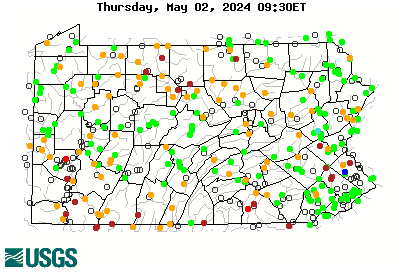The Army Corp of Engineers puts out a release schedule ahead of time with specific dates for recreational releases for whitewater, fishing, and draw downs. As shown below, the stream gauge at the dam shows how the flow changes:
https://waterdata.usgs.gov/monitoring-location/01447800/
As shown in early October, they had a release where the flow jumped from 190~ CFS to 1100~ CFS to 3700~ CFS. And conversely that flow was stepped back down over the course of a few days.
When its that high, fishing is unsafe even from a boat. Obviously as it decreases back to a floatable and than wadeable range the fishing would likely pick up in my opinion.
I don't have an answer on whether the fishing gets significantly better or worse over a certain time past the release, but I am sure the fish just adapt to it. I don't fish the Lehigh often enough to give an answer.
However, in my experience fishing tailwaters that aren't for flood control but rather power generation, the fish are used to the fluctuations and often times aren't affected in my opinion. For example, on the Magalloway in Maine, the base flow of 350CFS is released consistently at night. During the day, when power generation is operational the flow can get bumped up to twice that. These were the conditions that I fished in over the summer and prior fall. The fish did not seem affected in my opinion, its just the actual fishing itself was more difficult due to increased flow. On the flip side, over the summer on the Mag, the powerplant shorted out (along with several other plants on the system) causing the flow to go from 700 CFS to 150 CFS pretty much instantly. The fishing got crazy fast and furious when it dropped out. As the flow jumped back up after they fixed the issue, the fishing continued to be good.
My theory is the fish become acclimated to fluctuations in flow, but obviously other factors like water temperature play a role in that.




